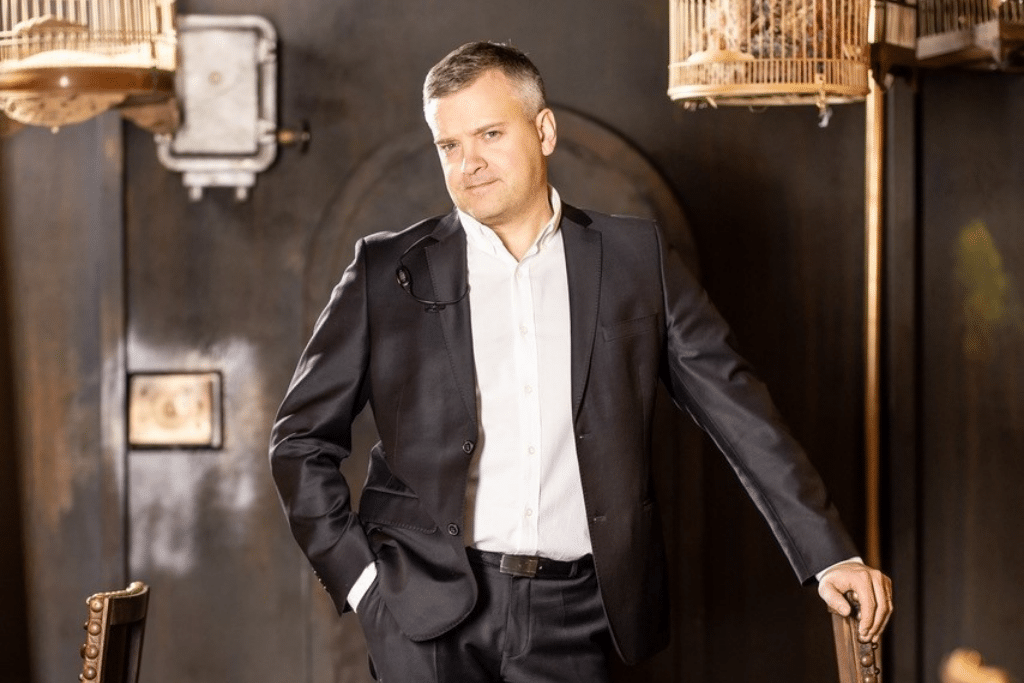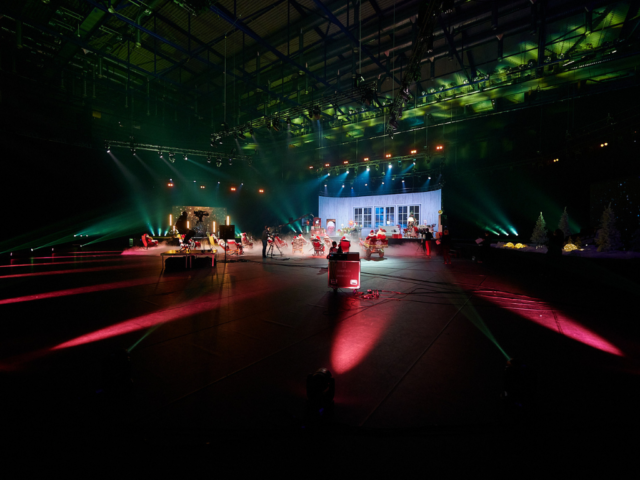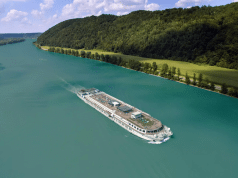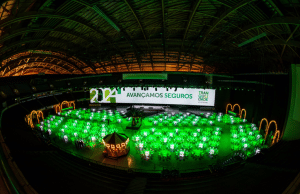THE WORLD OF VIRTUAL EVENTS
Virtual event organisation experts Leho Valmas (Global Productions Estonia), Lehari Kaustel (Global Virtual Solutions, Royal Experience), Taavi Puuorg (Frank Events) and Neeme Kari (HYPE) discuss the value of virtual events and what expenses should be accounted for when organising these types of events.
What is the added value of an virtual event?
Leho Valmas: We can accurately measure the time the participant spent at the seminar, the location of the login, the web browser used, and other details that the client wants. The event can easily be watched at a later time, archived, analysed, and even protected by a paywall in order to create a revenue base.
Lehari Kaustel: A virtual event offers many different ways to convey the message. Examples of great added value are flexibility and time. Virtually, you can be at one event at one moment and at the next at another moment, without physically changing your location. This gives virtual events a huge advantage. For the organiser, this means a larger number of participants – many more interested people will take part in the event. There are a certain number of seats in halls – online, however, you can host as many participants as you want.
Taavi Puuorg: Virtual events give you the opportunity to participate in various work processes or entertainment no matter where you are. Often, companies have branch offices away from their headquarters, making it more cost-effective to host a virtual event.
Neeme Kari: Conferences are about more (until the COVID crisis) than what the participant sees and hears from the speaker. The most important part of conferences is the establishment of personal contacts and socialisation (new environment, travelling, etc., which is often the main motivator). Before the COVID crisis, virtual conferences did not have any real benefits over physical conferences. During the COVID crisis, virtual events are the only option. They give us the opportunity to organise a conference at all. In this context, the virtual world is saving the world of conferences. A professional moderator (ideally several moderators) also adds value to conferences.

Is organising a virtual event cheaper than a physical event?
LK: It is both cheaper and more environmentally friendly. Physical events mean costs related to transport, catering, and accommodation – which are not needed for virtual events. From one small space, it is possible to share your creations to almost any corner of the world without being physically present. However, virtual events have different cost items, such as reliable equipment and special platforms that make the event smoother and more exciting.
TP: It largely depends on the concept and what is to be achieved. A virtual event can also be more expensive if you are using TV show production, sending food/drinks/gifts to everyone, and involving different performers/artists. Virtual events are usually cheaper but it depends on the goals of the virtual concept.
NK: This is the general expectation, as there are no significant human costs such as meals and travel expenses. However, it depends on the event. Let us compare the series of events organised by us: one year, we had a physical event and the next year, a virtual event with the same content and volume. We saved on not spending money on catering, logistics, and gifts, but we used these resources to produce better and more engaging content with better technical solutions. Trying to compensate for all the missing elements can mean that the virtual event becomes more expensive than the so-called real event (sending food gift baskets to the homes of the participants, using more expensive and complicated studio solutions, TV directing, performers, side activities, entertainment, etc.).
LV: It all depends on the wishes and needs of the client. Organising a hybrid event is usually more expensive because in addition to the on-site production, a telecommunications part is also added while taking into account the client’s more detailed wishes, a landing page, etc. The cheapest way to broadcast video is with a personal webcam or phone. However, the poor quality of the broadcast means that the participant will not focus on the most important element – the content of the broadcast. Our team believes this sacrifice should not be made. Ensuring maximum convenience for the lecturer at the venue will let the quality of the content shine through. The well-thought-out layout of the stage, lighting, lecturer’s clock and monitors, presentation remote, comfortable furniture, drinking water, etc. We know that there is no standard technical solution in the professional world. The wishes, needs, expectations, and financial capabilities of all clients are different. We work with many corporations and have to take into account the visual identity of each client. It starts with display graphics, flower arrangements and carpet colour, specially designed presentation files, picture-in-picture background graphics, and the like.
Neeme Kari

What costs must the organiser take into account?
TP: Technical production costs (studio and existing equipment in the studio), license fees, performers, artists. These are the main key factors in budgeting.
NK: A competent technical team (including managing agency), a licensed working transfer platform, complete technical solution (e.g. studio, etc.), the cost of the programme/content (speakers, activities, motivational speakers, team training). We stand for fair remuneration of professionals in our field and for environmentally friendly solutions, which may not be the most favourable way of organising an event, but speaks very clearly about the actual values of the client. There is a much greater contribution to visual and decorative solutions to make the event unique and attractive.
LV: For some virtual broadcasts, our clients have only needed a phone tripod, a presentation remote, or a high-quality webcam, the rental prices of which start from 15 euros. The price range of an average video broadcast is 2000–4000 euros but the cost can go up to 20,000–50,000 euros. These prices are indicative and not directly related to the number of viewers.
LK: It is possible to save a lot of money with virtual events. However, the costs of equipment and the people who know how to professionally operate it must be taken into account. With each event, we have learned more and more about how to find suitable solutions to technical challenges, and each time, it has become clearer how important it is to ensure technical security and reliability in the provision of quality service.
Taavi Puuorg

What is the most difficult part of planning and conducting a virtual event?
TP: Timeliness and involvement. When watching a broadcast, people expect it to be interesting enough to keep them in front of the screen. The excitement level must be kept high. There are different ways to ensure that. One of the most important things is that the broadcast must be as smooth as possible and different problems must be avoided. This can be achieved by practising the broadcast with the speakers as much as possible.
NK: Clients are rather sceptical about the virtual world, as people quickly get tired of staring at the screen. It is necessary to plan the length of presentations, different activities, etc. very precisely to keep the audience’s attention on the event. Expectations for prices are significantly lower than the real costs of the studios, the team, and the equipment. You have to find the right speakers who are successful in the virtual world as well (speakers who are very convincing and charismatic in real life may not have an equal effect in the virtual world).
LK: Just like with a physical event, a lot of preliminary work needs to be done to make sure the virtual event runs smoothly. It is necessary to take tests with all the speakers, introduce them to the programs we work with, and ensure that their equipment is operational. You must also have additional equipment to be prepared for failures. The most difficult thing is that even with good preparation, not everything depends on us – equipment, which can be unpredictable at times, is crucial. Directing people from all over the world live is also quite difficult and has required us to practice a lot in order to do it smoothly and masterfully.
LV: All details must receive equal attention and it is not possible to say which part is the most complex. The quality and speed of the Internet connection already described above are the primary factors that need to be mapped. Over the past year, there has been a great deal of flexibility on the part of service providers, as national or global restrictions may change the format and course of events within hours. This, in turn, requires rapid rearrangements in terms of catering, venue, technical staff, and relocation of equipment. The understanding approach of many hotel chains to reducing and reimbursing booking fees needs to be emphasised.
Lehari Kaustel















